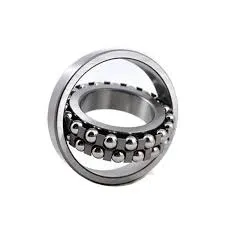
Nov . 18, 2024 16:35 Back to list
cylindrical roller bearing catalogue pdf
Understanding Cylindrical Roller Bearings A Comprehensive Overview
Cylindrical roller bearings are vital components in many industrial applications, characterized by their ability to handle radial loads and some axial loads. Their design integrates cylindrical rollers between an inner and outer ring, allowing for substantial load capacity and reduced friction. This article provides an overview of cylindrical roller bearings, their structure, working principle, applications, and advantages, drawing insights from various bearing catalogues.
Structure and Design
Cylindrical roller bearings consist of an inner ring, an outer ring, and a series of cylindrical rollers. The rollers are designed to maintain better contact with the raceways, which typically results in higher load-carrying capacity compared to other types of bearings—like ball bearings. The design minimizes friction, allowing for smoother operation and longer lifespan. Importantly, these bearings can be single-row, double-row, or multi-row, depending on the application needs and load requirements.
The raceways on the inner and outer rings are precisely machined to achieve optimal contact with the rollers, which are usually held in place by a cage or separator that prevents them from skewing and ensures uniform distribution of load.
Working Principle
Cylindrical roller bearings operate on the principle of rolling motion. When the bearing is subjected to a radial load, the cylindrical rollers roll along the raceways of the inner and outer rings. This rolling motion reduces the friction compared to sliding motion, significantly enhancing efficiency and performance in mechanical systems. The design also allows for some axial displacement, especially in double-row configurations, which are useful in applications where misalignment or axial movement is expected.
Applications
Cylindrical roller bearings are utilized widely across various industries due to their versatile nature. Common applications include
1. Automotive In cars, these bearings are used in the wheel hubs, gearboxes, and transmissions, where efficiency and load capacity are critical.
2. Industrial Machinery Many types of machines, such as conveyor systems, gearboxes, and pumps, rely on cylindrical roller bearings due to their robustness and ability to handle heavy loads.
3. Aerospace In the aerospace sector, these bearings are essential for applications such as jet engines and landing gear, where reliability and performance are paramount.
cylindrical roller bearing catalogue pdf

5. Heavy Equipment Construction equipment and mining machinery benefit from the durability and strength of these bearings, ensuring reliable operation under extreme conditions.
Advantages
The advantages of cylindrical roller bearings make them a preferred choice in many engineering applications.
- High Load Capacity They can support high radial loads due to their contact area and roller design.
- Reduced Friction The rolling motion minimizes energy loss and heat generation, enhancing efficiency.
- Long Service Life With proper lubrication and maintenance, cylindrical roller bearings exhibit a longer operational life, making them economical over time.
- Versatility The availability of various designs, such as double-row and tapered, allows for customization based on specific application requirements.
- Easy Maintenance Many cylindrical roller bearings come with seals or shields that simplify maintenance and enhance reliability by keeping contaminants out.
Conclusion
Cylindrical roller bearings play a vital role in the functionality and efficiency of various machinery. Their unique design, ability to handle high loads, and versatility across different sectors make them indispensable in the industrial world. Understanding their characteristics and applications can help engineers and technicians choose the right bearing solutions, ensuring optimal performance and longevity in their machines. As technology advances, the design and manufacturing processes of these bearings continue to evolve, promising even greater capacities and efficiencies for future applications.
Latest news
-
Common Failures in Thrust Ball Bearings and Solutions
NewsAug.22,2025
-
How Tapered Roller Bearings Can Take Shock Loads
NewsAug.22,2025
-
Angular Bearings in High-Precision Spindles
NewsAug.22,2025
-
The Impact of Misalignment on Cylindrical Roller Bearing Performance
NewsAug.22,2025
-
The Role of Cage Design in Deep Groove Ball Bearing Durability
NewsAug.22,2025
-
The Impact of Material Quality on Machinery Bearings’ Lifespan
NewsAug.22,2025
